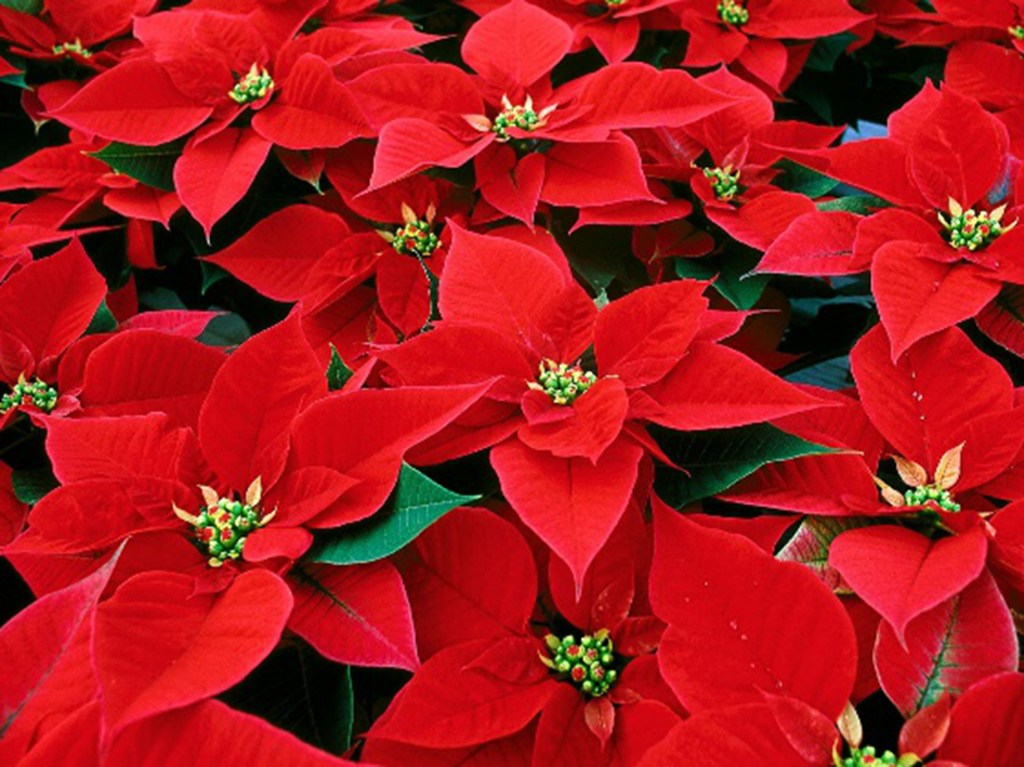With a little care, poinsettias can be beautiful year after year
Published 10:46 am Monday, December 4, 2017

- When selected poinsettias, it's important to choose one that has fully colored bracts which have flowers that are just starting to open, or ideally, with flower buds that are still tightly closed.
Thanksgiving used to mark the day that it was officially okay to break out the Christmas decorations.
Apparently, that is no longer the case, as some stores that I frequent had shelves filled with all things red and green before Halloween. There should be a rule, but that’s just one person’s opinion.
Trending
Although I don’t like to rush my holidays, I thoroughly enjoy decorating for the Christmas season. I am certainly not the gal who puts her tree up before the turkey gets cold, but a poinsettia or two will be purchased before the leftovers are polished off.
A history
Joel Poinsett, the first U.S. Ambassador to Mexico, was so taken by the rich red “flowers” of the plant that he brought it to the United States so he could propagate them.
The colored petals are actually “bracts,” which are modified leaves. The flower is situated in the center of the bracts and is green or yellow.
Regardless of the poinsettia’s makeup, people love the deep red, speckled, yellow, pink or white blooming plants, making them the number one selling plant in the U.S.
Poinsettias, unfortunately, have a relatively short bloom time. The maximum beauty of the plant lasts between 2-4 weeks, but purchasing the right plant and giving it some TLC can help lengthen the time to as long as 8 weeks. It is a perennial plant that can last for years but needs to be properly cared for during the offseason to encourage it to re-bloom.
Trending
Choosing your poinsettia
Select a healthy plant that has fully colored bracts with flowers that are just starting to open, or ideally, with flower buds that are still tightly closed. The more mature the flower, the less time the plant will put on its show.
The plant should be bushy with dark green leaves that grow from the bracts to the base of the plant. It should be sturdy and able to stand upright on its own without the help of cages or stakes.
A protective sleeve is helpful during transport. However, it is not recommended to purchase a poinsettia that is being stored inside the sleeve. This does not allow for proper air circulation, which is detrimental to the plant’s health.
Plants that appear to wilt when wet should also be passed over. This is a condition known as epinasty, from which the poinsettia will not recover. The leaves should also be free of insects and signs of disease.
Caring for the plant
After you get your poinsettia home, place it in bright but not direct sunlight. Direct sunlight can cause the bracts to lose their color; too much shade can cause the leaves to fall.
If you want the plant to make a statement in a location that does not have optimal light, you may want to consider maintaining the plant where it will thrive and moving it when you want it on display.
Poinsettias prefer moderately moist soil, never allowing the plant to completely dry out or sit in standing water. They do not tolerate extreme temperature changes and are most comfortable in temps less than 70 degrees. Keep away from cold windows, drafts and heater vents.
Poinsettias do well when grouped with plants that help maintain humidity levels. You can also maintain humidity by setting the plant in a gravel-filled pan that has been filled halfway with water.
After the bracts have fallen, you have two choices – discard the plant or step to the challenge of bringing her back for the following year. If you choose the latter, the following steps should be followed:
• Decrease watering, but do not allow the plant to completely dry out;
• Relocate to a cool, dark place until spring;
• Fertilize with a complete houseplant fertilizer at least once per month;
• In spring, cut back to 6 to 8 inches, place in a sunny spot and water thoroughly;
• If necessary, repot in June;
• Pinch tips through mid-August to encourage the plant to become bushy;
• In fall, before temps drop, bring the poinsettia indoors;
• Starting Oct. 1, place the poinsettia in complete darkness from 5 p.m. to 8 a.m. for 8–10 weeks. Make sure the plant does not receive more than 10 hours of daylight during this time;
• It should not be exposed to any light whatsoever during the night hours. During daylight hours, place the plant in bright, indirect sunlight.
If all is successful, you will have a beautiful poinsettia to display year after year. Until next week, happy gardening.
— Irland, a member of the Limestone County Master Gardeners, can be reached at kippirland@hotmail.com. For more information on the Limestone County Master Gardeners, visit http://mg.aces.edu/limestone.





